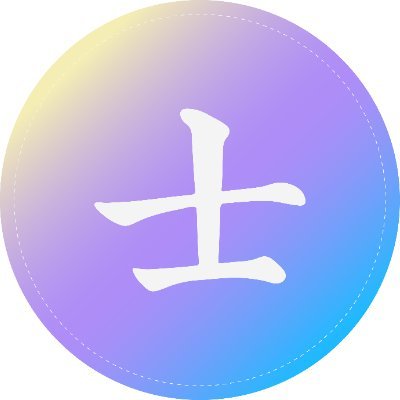Cronos-koers
in EUR

Over Cronos
Disclaimer
OKX geeft geen beleggings- of vermogensadvies. Je moet zorgvuldig overwegen of het verhandelen of bezitten van digitale bezittingen voor jou geschikt is in het licht van je financiële toestand. Raadpleeg je juridische, fiscale of beleggingsadviseur als je vragen hebt over je specifieke situatie. Raadpleeg voor meer informatie onze Gebruiksvoorwaarden en Risicowaarschuwing. Door gebruik te maken van de website van derden ('TPW'), ga je ermee akkoord dat elk gebruik van de TPW onderworpen is aan en beheerst wordt door de voorwaarden van de TPW. Tenzij uitdrukkelijk schriftelijk vermeld, zijn OKX en haar partners ("OKX") op geen enkele manier verbonden met de eigenaar van de exploitant van de TPW. Je gaat ermee akkoord dat OKX niet verantwoordelijk of aansprakelijk is voor verlies, schade en andere gevolgen die voortvloeien uit jouw gebruik van de TPW. Houd er rekening mee dat het gebruik van een TPW kan leiden tot verlies of vermindering van je bezittingen. Het product is mogelijk niet in alle rechtsgebieden beschikbaar.
Prijsprestaties van Cronos
Cronos op sociale media
Handleidingen

Maak een gratis OKX-account aan.
Stort geld op je account.
Kies je crypto.
Cronos op OKX Learn
Cronos Veelgestelde vragen
Duik dieper in Cronos
Cronos je blockchain spuštěný v listopadu 2021 kryptoměnovou burzou Crypto.com. Jedná se o blockchain kompatibilní s Ethereem, který byl vytvořen s sadou Cosmos Software Development Kit (SDK), open-source frameworkem pro vytvářeníPoS (Proof of Stake)a blockchainy Proof of Authority (PoA).
To umožňuje, aby Cronos byl kompatibilní sEthereumaBlockchainy Cosmos, což je jednoduché pro vývojáře Etherea a Cosmos a uživatele z hlediska migrace jejich projektů nebo aktiv na Cronos a naopak. Kromě toho Cronos používá protokol Inter-Blockchain Communication Protocol (IBC), který mu umožňuje komunikovat s ostatními blockchainy, které používají stejný protokol.
Cronos byl vytvořen tak, aby byl škálovatelný a interoperabilní, aniž by obětoval použitelnost. Má rovněž v úmyslu komunikovat s ostatními blockchainy a umožnit uživatelům převádět aktiva mezi Cronos a dalšími blockchainy v reálném čase. Jinými slovy, blockchainový uživatel kompatibilní s Cronos, jako je Ethereum, může převádět tokeny a další aktiva, napříkladNFT tokeny, od Etherea po Cronos. Můžou také použít své tokeny Cronos na Ethereu.
Nativní token ERC-20 projektu Cronos, CRO, je vyžadováno pro síťové transakce. Jde také o governance token sítě a lze ho použít k hlasování o zásadních návrzích, které budou utvářet budoucnost platformy Cronos. Kromě toho držení konkrétních částek tokenů CRO může mít při obchodování na burze Crypto.com nárok na různé úrovně poplatků.
CRO cena a tokenomika
Cronos má maximální objem v oběhuz 30 miliard tokenů CRO. Všechny tokeny Cronos, které kdy budou v oběhu, byly vytvořeny spolu se spuštěním blockchainu Cronos. To znamená, že se neprodukují žádné nové tokeny Cronos a už je nelze těžit. V době vzniku tohoto textu je v oběhu nyní 25 miliard tokenů CRO. To představuje přibližně 83 % celkové zásoby.
Zatímco celková zásoba tokenů CRO původně měla za cíl 100 miliard tokenů, tým Cronos vedl jednoho z největších tokenů v historii blockchainu před spuštěním hlavní sítě Cronos. Ve snaze dále decentralizovat blockchain Cronos bylo spáleno 5,6 miliardy tokenů CRO 22. února 2021. Dalších 10,4 miliardy tokenů CRO bylo uzamčeno do měsíčního vestingu. Jak budou tyto tokeny uvolněny, budou automaticky spáleny.
Tyto trvalé pálení tokenů mají za cíl řešit problémy s centralizací a zásobou. Pálení tokenů CRO přilákalo zásobu v oběhu z pouhých 24% na více než 80 %, což výrazně snížilo nabídku tokenů a alokaci. To pomáhá decentralizovaně token CRO a snižuje nabídku. Tato nově nalezená vzácnost tokenů způsobila nárůst ceny tokenů CRO a obnovila poptávku tokenu.
Informace o zakladatelích
Síť Cronos je produktem Crypto.com, centralizované burzy v oblasti Monaco Technologies Limited, kterou v roce 2016 původně založili Kris Marszalek, Rafael Melo, Gary Or a Bobby Bao. Tým přináší řadu zážitků z oboru a z celého světa, a to z Evropy a Číny. Před založením společnosti Crypto.com založil společnost Marszalek firmu zabývající se elektronickým obchodováním a společnost zaměřující se na výpočetní techniku.
Melo a Bao také vznikly z prostředí technické a informatiky a mají více než 9letou zkušenost jako softwarový inženýr v plném stacku. Mezitím přinášejí zkušenosti z tradičního finančního a investičního odvětví. Společně spustil tým Crypto.com, který vedl k dalšímu vývoji blockchainu Cronos Blockchain.
Ačkoli je blockchain Cronos ještě relativně malý, od svého spuštění zaznamenal obrovské přijetí. Podle generálního ředitele Cronose Kena Timsita zpracoval Cronos v posledních třech měsících po spuštění 12 milionů transakcí a uzamkl v různých službách a protokolech v blockchainu téměř 2 miliardy USD.
ESG-vermelding








